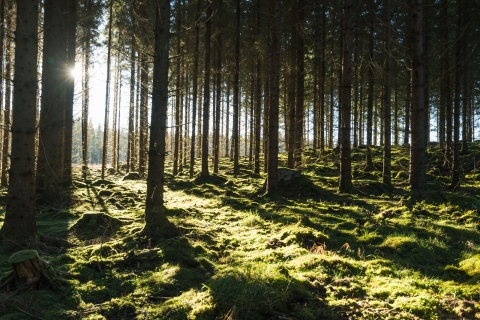President issues executive order to promote active forest management, reduce wildfire risks
Author
Upcoming Events
Related News

Key Takeaways
On December 21, President Trump issued Executive Order (E.O.) 13855, directing the Secretaries of the U.S. Department of Agriculture (USDA) and U.S. Department of the Interior (DOI) to implement policies to improve forest management practices by reducing hazardous fuel loads, mitigating fire risk and ensuring the safety and stability of local communities. The executive order identifies active forest management as a key tool to protect communities from catastrophic wildfires while supporting the success of local economies. The E.O. also recognizes counties as critical partners in managing our federal forest lands.
Under the E.O., both secretaries must coordinate federal, state, tribal and local assets relating to post-fire restoration and help reduce hazardous fuels through active forest management. The E.O. also clarifies that the two agencies shall prioritize fuel reduction treatments as part of their forest management activities, while also pursuing benefits to rural economies by encouraging productive uses of forest by-products. DOI and USDA also must collaborate with state, tribal and local partners to create a comprehensive wildfire strategy that prioritizes the highest-risk lands, considers regulatory and economic challenges related to managing DOI and U.S. Forest Service (USFS) land and encourages local economic growth through timber and biomass sales.
Additionally, DOI and USDA are directed to establish specific forest management objectives. For example, for 2019, DOI shall establish a goal of treating 750,000 acres of DOI-administered land for fuels reduction and 500,000 acres to protect water quality and mitigate erosion and flooding risks resulting from forest fires. USDA, meanwhile, shall establish a goal of treating 3.5 million acres of USFS land for fuels reduction and 2.2 million acres to address water quality and post-fire erosion and flooding. DOI and USDA are also instructed, through these activities, to offer up for sale 600 million board feet and 3.8 billion board feet of timber from DOI and USDA FS lands, respectively. The order also prioritizes proper maintenance of public roads vital to conducting management activities.
In order to accomplish these objectives, USDA and DOI are instructed to coordinate with other federal agencies and streamline relevant administrative and regulatory processes. This may be done by minimizing the time period for regulatory comments, consultation and administrative review, using all applicable categorical exclusions and developing new categorical exclusions. Counties support this executive action, as it requires expanded collaboration with local governments, including through Good Neighbor Authority agreements and long-term stewardship contracts.

Attachments
Related News

DOI announces creation of new U.S. Wildland Fire Service
On September 15, the U.S. Departments of the Interior (DOI) and Agriculture (USDA) announced major joint directives to change how the agencies will coordinate and provide wildfire response, including the creation of a new U.S. Wildland Fire Service within Interior.

CMS announces Rural Health Transformation Program funding
On December 29, the Centers for Medicare & Medicaid Services (CMS) announced $50 billion in awards over 5 years to all 50 states under the Rural Health Transformation Program.

U.S. House of Representatives passes SPEED Act and other permitting reform bills
On December 18, the U.S. House of Representatives passed the SPEED Act (H.R. 4776). The SPEED Act would strengthen county involvement in decision-making and make needed commonsense reforms to the federal environmental review process.
